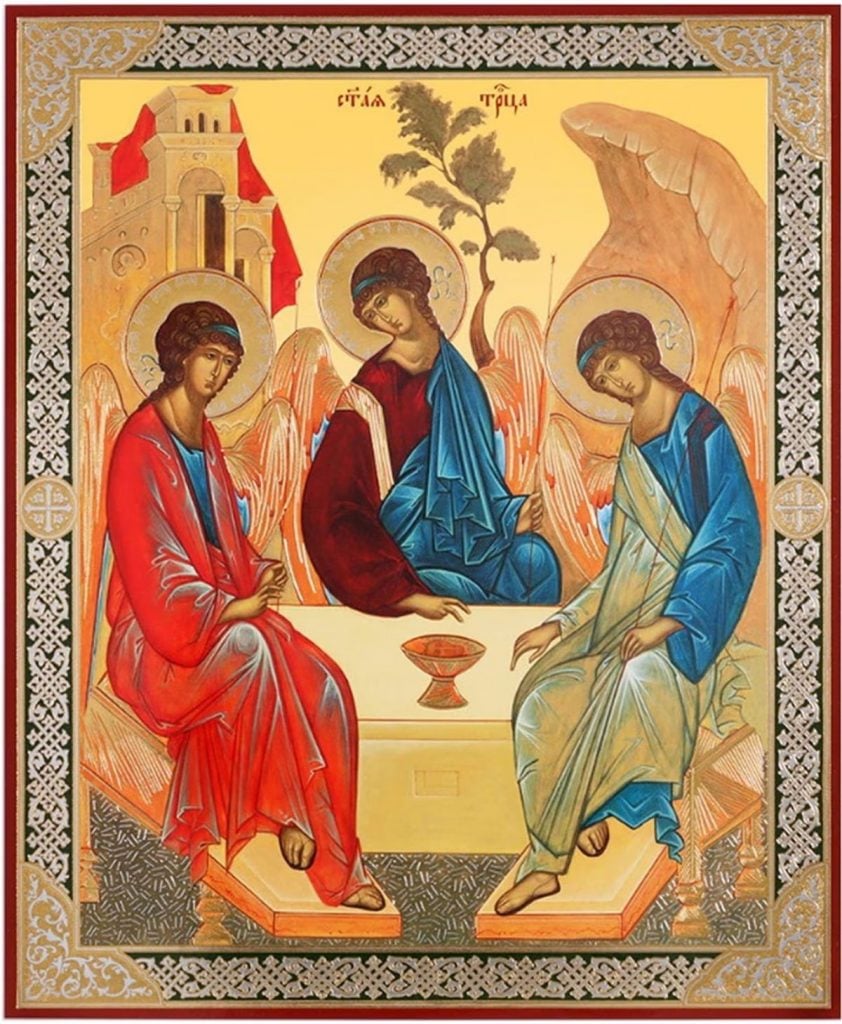Art World
Putin Has Ordered a State Museum to Return Russia’s Most Precious Icon to the Orthodox Church, Raising Panic Over Its Fragile Condition
Conservationists fear the icon might simply disintegrate if removed from museum conditions.

Conservationists fear the icon might simply disintegrate if removed from museum conditions.

Brian Boucher

Russia’s most famous icon, and one of Russian art’s greatest achievements, the 15th-century icon Trinity by the legendary painter Andrei Rublev has resided at the State Tretyakov Gallery since the 1920s. Now, President Vladimir Putin has ordered the institution to return the painting to the Russian Orthodox Church.
Art experts are aghast, warning that the fragile icon may not survive the move. The Trinity and other icons are kept in stable conditions, with Rublev’s famous icon specifically ensconced in a protective glass chamber. It shows three angels visiting the Prophet Abraham at the Oak of Mamre, in a scene described in the book of Genesis.
“All professional restorers unanimously say that the condition of the Trinity plaque is such that any movement, of it, even for a short distance, is fraught with danger and the icon may simply [be destroyed],” says art historian Alexei Lidov in The Insider, quoted in the Art Newspaper.
“It could simply be lost; it could disintegrate into several pieces,” Pushkin State Museum of Fine Arts director Elizaveta Likhacheva told the official Russian news agency Tass, quoted by TAN. “It consists of three plates that are not very securely attached to each other.”
The move has been interpreted as a cynical play in Putin’s war in Ukraine, with the Economist blaring, “The Kremlin drafts a much-loved icon for war propaganda,” and El País declaring, “Putin places Russia’s religious art at the service of geopolitics.”
The Russian Orthodox Church has stood behind the Russian invasion, showing its support by blessing Russian soldiers and telling them a place in Heaven awaits those who die in battle.
The legality of the move is being questioned.
“The President of the Russian Federation does not have the authority to dispose of objects belonging to the state, included in the Russian museum collections […] and he has never had such authority,” Andrei Vorobev, who was head of the catalogue of the Russian Federation Museum collections as well as deputy director of the Tretyakov Gallery, told El País.
Putin’s spokesman, Dmitry Peskov, is quoted in the Art Newspaper saying that the Trinity’s transfer is “the prerogative of the ministry of culture” and “without a doubt was coordinated with the head of state.”
The Trektyakov Gallery’s director, art historian Zelfira Tregulova, was abruptly ousted in February following a complaint that the museum does not represent Russia’s “traditional values.” She was replaced by Elena Pronicheva, the daughter of Federal Security Service General Vladimir Pronichev. Tregulova had expressed skepticism about the war in Ukraine.
Also going to the Church will be the 18th-century silver sarcophagus of the sainted 13th-century Prince and military hero Alexander Nevsky, which has been in the collection of the Hermitage Museum in St. Petersburg. That decision was announced last weekend, ARTnews reported.
More Trending Stories: